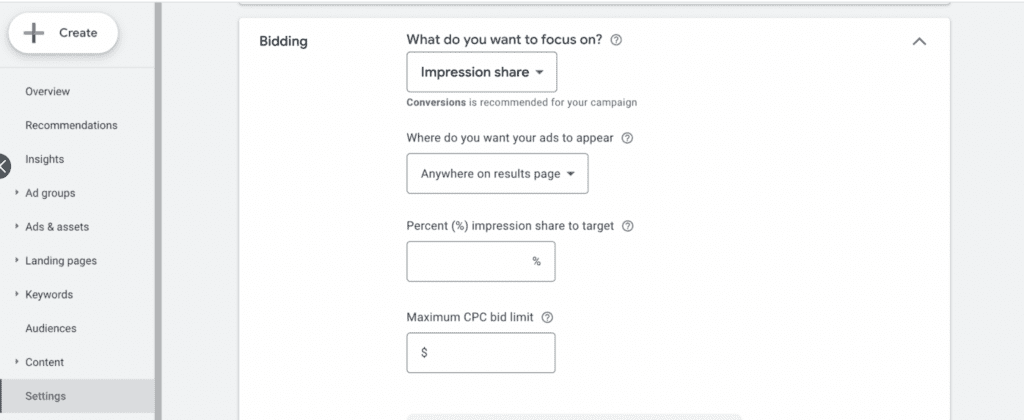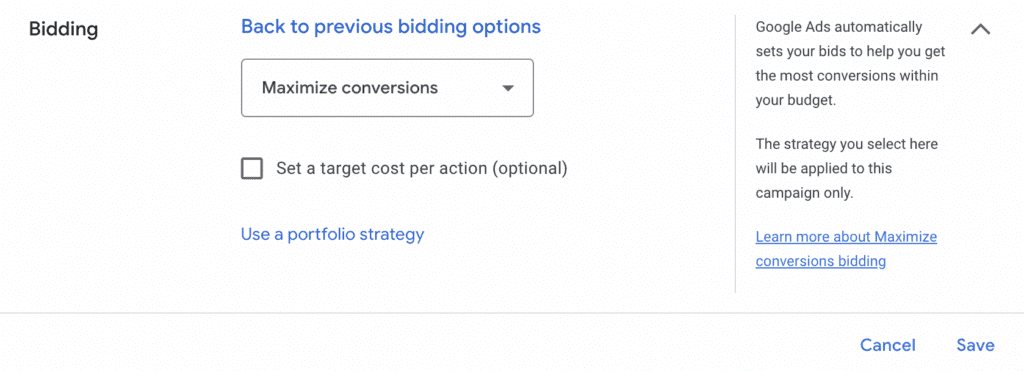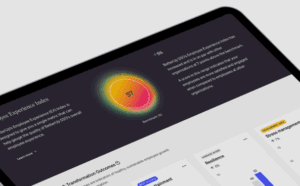Home / Blog / 7 Automated Bidding Strategies In Google Ads
7 Automated Bidding Strategies In Google Ads
Published: March 21, 2023
Share on LinkedIn Share on Twitter Share on Facebook Click to print Click to copy url

Contents Overview
Choosing a bidding strategy in Google Ads can sometimes be tricky. However, having an understanding of how each bidding strategy works will make the choice much easier. In this article, we’ll review seven common automated bidding strategies and how those might impact your results. These methods will help you get the most out of your PPC campaigns with minimal effort on your part while leaving the bidding up to Google. In general, automated bidding can be extremely effective because they run without any manual intervention. Each of these strategies has its advantages and disadvantages and it all depends on your advertising goals as well as your budget. Let’s dive in!
Related Content:
Manual Bidding Vs Automated Bidding
Manual Bidding
If you’re an experienced marketer, manual bidding or enhanced manual bidding can be a great option for your campaigns. With this type of strategy, you specify the maximum amount that should be spent on each ad group or keywords and set bids based on the performance of those ads. It’s best used with large budgets because it gives you full control over how much money is being spent on each keyword. This allows marketers to bid higher when they’re getting good results or lower when they aren’t seeing conversions or engagement from their ads (and thus wasting budget).
Manual bidding also allows marketers to optimize their campaigns based on multiple objectives–for example: if one objective is increasing brand awareness while another objective is driving sales leads through PPC landing pages–you can create separate ad groups for each objective and then manually adjust bids accordingly so both get adequate attention without running into early budget constraints.
Manual bidding can also be super beneficial in Branded campaigns. Typically, we want to show up as much as possible for our branded terms but at the cheapest price possible. We frequently see automated bid strategies drive up CPCs, so in order to keep Branded costs low while still maintaining a high impression share we often use manual bidding.
Automated Bidding
Automated bidding simply means you will leave the decision up to Google to determine when it is a good idea to adjust bids. Google in turn will use its technology and your goals to figure out when and how much to bid per click in order for you to achieve your desired outcome. Using automated bidding and setting your goals within campaigns does not automatically mean you will achieve them. In addition, conversions must be set up correctly for automated bidding to have the most impact as Google will use the conversion data to make decisions.
For example, if you tell Google that you want a ROAS of 20, Google will adjust your bids accordingly, but if it is unrealistic, your ads may not serve at all since the bids will be so low. You will have to set realistic goals based on the current campaign data and can adjust them depending on how your ads perform.
This method is not just for those who are starting out, but even experienced marketers can make use of it. Again, it will depend on many factors and goals of your advertising campaigns.
Pros and Cons Of Automated Bidding
Benefits
The most obvious advantage of automated bidding is that it takes the guesswork out of setting your bids. Instead of manually setting your bids each day, you can let Google calculate them for you and change them automatically based on how much competition there is for your keywords in real time. This can help keep costs down without sacrificing performance or missing any opportunities for conversions.
Drawbacks
While this feature can be useful for businesses with large ad campaigns, it might not be ideal for small companies or startups with limited budgets who don’t have much experience using paid search advertising tools like Google Ads. If a company doesn’t have enough data on their products or services yet, then they may run into issues determining what bid amount would generate enough clicks without costing too much money per click (CPC).
Additionally, if someone wants full control over their CPCs then manual bidding might be preferable. With manual bidding you’ll know exactly when changes need to be made rather than relying on an algorithm that could potentially make mistakes due its inherent limitations. For example, algorithms might not consider factors like seasonality which could lead to certain keywords having different values depending upon how frequently they’re searched throughout the year.
1. Maximize Clicks
As the name suggests, this strategy is implemented when you want to get as many clicks as possible for the budget that you have. If you’re new to Google Ads, or if you want to increase your clicks, the Maximize Clicks strategy is for you.
This strategy is easy to set up and understand, and it allows advertisers who are new to Google Ads to quickly get their campaigns up and running. Google Ads’ Maximize Clicks bidding strategy is designed to maximize clicks, not impressions or conversions. Maximize Clicks is a good strategy for advertisers who are trying to get more traffic to their site and are not as focused on conversions. We often use this bid strategy for the first month or 2 of launching a new campaign in order to gather initial data. From there, we review if it makes sense to upgrade to a more conversion centered strategy.

You can follow these steps to set up a “Maximize Clicks” bid strategy:
- Specify your ad group’s goal.
- Set a cost per click (CPC) target or maximum cost per click (CPM) limit.
- Select Maximize clicks as the bidding strategy for the ad group when you want to maximize clicks by decreasing your bid further than other automated strategies would allow
If you decide that Maximize Clicks is not benefiting your campaigns, then you can change your bidding strategy to other methods. Next, let’s discuss Target Impression Share and see if it is right for you.
2. Target Impression Share

Target impression share is a bidding strategy that allows you to control how much of the available ad space on a given keyword or ad group you want to take up. To set up target impression share you can follow these steps:
- Within the Settings of your campaign, select “Bidding”
- Choose “Impression Share” from the strategies
- Select where you would like the ad to appear:
- Anywhere on results page
- Top of results page
- Absolute top of results page
- Enter a percentage in the field
- Decide on your maximum CPC bid limit

For example, if you want to spend 80% of your budget on getting impressions for one keyword but only 20% on getting clicks, enter 80 as your target impression share and then choose “Impressions” from its drop-down menu (instead of clicks).
Targeting impressions instead of clicks means that Google will try not just to get users’ attention with ads but also keep those users engaged so they can see more than one ad before leaving their search results page. This gives advertisers more chances at being seen by potential customers and converting them into leads or sales opportunities. One important thing to remember is that this strategy is only available for “Search Network” and will not be applicable for partner websites.
The most practical use for the Target Impression Share strategy is when your campaign has your brand name and you are trying to build brand awareness. If you are focused more on conversions, then Target Impression Share may not be right for you, so let’s look at Target CPA strategy.
3. Target CPA
Target CPA is the amount you would like to spend to get one conversion. It’s a common way to optimize for conversions, but it can also be used as an alternative bidding strategy.
If you set your Target CPA, it doesn’t mean you will get a conversion once you spend that amount, but Google will try to control the ad spend to ensure that you get clicks that are most likely to convert within that CPA. Your CPA may end up being higher or lower than your Target CPA, but over time Google will learn more about your business and may be able to deliver on the one you set.

You might set up a Target CPA campaign if you have an average order value (AOV) that is lower than what you want it to be. For example, let’s say that your current AOV is $100 and the average cost per sale (ACS) of customers who convert on your website is $200. If that were true then setting up a Target CPA campaign would allow advertisers with low AOVs like yours to still make money off of their ads without having them bid too high in order to win clicks from users who are looking for high-value offers.
4. Target ROAS
As a measure of the performance of your ads, return on ad spend (ROAS) is calculated by dividing the revenue generated from your ads by the amount you spent on them. You can think of this as “What did I get for my money?” or “How much money did each dollar spent on Google Ads generate?”.
Target ROAS bidding is an automated bidding strategy that maximizes the return on ad spend (ROAS). It does this by strictly targeting a specific dollar value for each click and then adjusting bids as necessary to achieve that target ROAS goal. Target ROAS is useful for advertisers who want to maximize their return on investment from Google Ads campaigns.
Target ROAS is set as a percentage of what you would like your ad spend to bring in in revenue. For example, if you would like to have a revenue of $100 per $10 spent, then your Target ROAS would be set at 1,000%.
It’s very important to understand the percentages you want to set. If you set the wrong one, you may end up spending more budget than you intend. Alternatively, you may not get any clicks if the percentage is too high. As is the case with Maximize clicks and Target CPA, if your goals are not realistic, Google will still follow your guidance but you still may not receive much traffic.
With all of these benefits and drawbacks, it’s important to understand that automated bidding is not a one-size-fits-all solution. It can be difficult to set up, optimize and track. In addition, managing an account with automated bids requires constant monitoring and adjustments as your business changes over time. If you’re looking for something more hands-off than this option offers–but still want the advantages of Google Ads’ automated features–consider using Smart Bidding with Maximize Conversions instead, which is discussed next.
5. Maximize Conversions
Maximize conversions is the most important goal of any pay-per-click campaign. This strategy will focus on maximizing the number of conversions and not the value of conversions. Google will use its smart bidding technology to bid on keywords and phrases that have the highest chance of converting for your business.

When you maximize conversions, you’re optimizing for the most conversions you can get per your budget. This means that Google Ads will show your ads to people who are more likely to convert at the best possible cost per click (CPC).When you optimize for conversions, it means that the majority of your ad spend is going toward people who are likely to buy from your store or service. When these customers click on an ad and visit one of your websites and end up purchasing your product or service, the action is recorded as a conversion.For example: if you have 100 visitors and 10 purchases registered, then your conversion rate would be 10%. However, if those same 100 visitors resulted in only 5 purchases, then your conversion rate would be 5%.
This strategy acts very similar to Target CPA and Target ROAS if you use the option of setting CPA within this strategy, but if you leave the CPA section blank, then Google will use your budget to maximize conversions for your business by using its machine learning systems and optimizing bids automatically.
If you would like your campaigns to focus more on the value of each conversion rather than the number of conversions, then the next strategy might be for you.
6. Maximize Conversion Value
Similar to Maximize Conversion strategy, Maximize Conversion Value uses Google’s automated smart bidding strategy to use your budget to achieve your desired results. The difference is this particular strategy focuses on the value of each conversion.
For example, if your campaigns lead to 2 conversions with each resulting in revenue of $1,000 each, then Google would prefer those two conversions rather than 10 conversions with $50 value each with this strategy.
Maximizing conversion value is the most important objective in Google Ads. There are many ways to maximize conversion value, but they usually involve bidding for conversions or using a conversion optimizer. If you would like to know the difference between Maximize Conversion and Maximize Conversion Value, then you can read Google’s explanation here.
7. Portfolio Bid Strategies
The last bid strategy I’d like to walk you through is the option of setting up a Portfolio bid strategy. Portfolio bid strategies, as explained by Google, are automated, goal-driven bid strategies that help you optimize bids across multiple campaigns. They automatically help you reach your performance goals and provide a single place for you to quickly change bidding settings for all campaigns that use a single portfolio bid strategy. We don’t steer towards this option very much, but portfolio bid strategies can actually be really beneficial if you’re wanting to use data across multiple campaigns to achieve a specific goal.
Portfolio bid strategies allow your campaigns to essentially share data, goals, and even budget. You can also deploy advanced combinations of the different strategies discussed above. One example of this is that you can utilize TCPA bidding while setting a max CPC limit, whereas you cannot set a max CPC bid limit using the normal TCPA bid strategy setup. If you’d like to read more about these options, here is a great additional article by Pixelrush.
Portfolio bid strategy options can be found in Tools & Settings -> Bid Strategies.

Portfolio bid strategies are much more complex, and we definitely recommend testing the individual automated bidding strategies above before testing this option.
Conclusion
Do you feel like a bid strategy expert yet? Hopefully, with these explanations, you’ll be able to start testing in your campaigns to see which strategy works best for your goals. Always remember to give your campaigns a few weeks to learn before switching from bid strategy to bid strategy because you want to make sure there is enough data before making a decision one way or the other. Automated bidding can really help your campaigns, but remember that there are always trade-offs: if you want to use automated bidding then it’s important to understand its limitations and know how much flexibility there is when making decisions about which strategy will work best for each campaign. Happy testing!
About GoFishDigital
MORE TO EXPLORE
Related Insights
More advice and inspiration from our blog
Why AI Makes Product Feed Optimization Critical for Google Shopping
AI is transforming Google Shopping. Learn why optimized product feeds are...
Logan Durant| October 16, 2025
Standard Shopping vs Performance Max: When to Use Each in Google Ads
Performance Max is powerful, but not always the right fit. Learn...
Brian ONeil| October 01, 2025
Negative Keywords in Google Ads: The Key to Scalable Campaigns
Learn how negative keywords improve Google Ads performance. Build master lists,...





